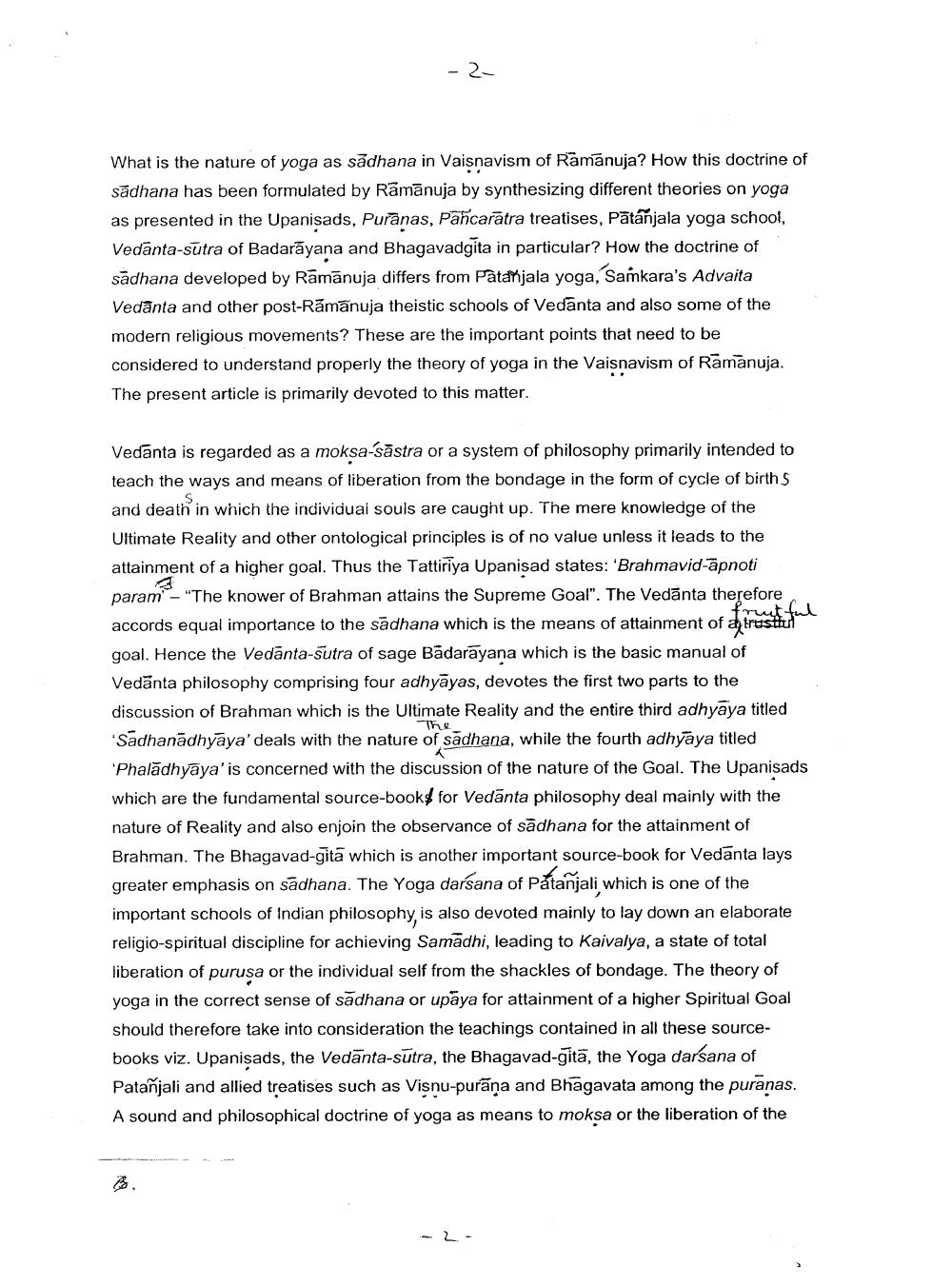Book Title: Synthesis of Yoga in Vaisnavism of Ramanuja Author(s): Publisher: View full book textPage 2
________________ What is the nature of yoga as sadhana in Vaisnavism of Ramanuja? How this doctrine of sadhana has been formulated by Ramanuja by synthesizing different theories on yoga as presented in the Upanisads, Puranas, Pancaratra treatises, Patanjala yoga school, Vedanta-sutra of Badarayana and Bhagavadgita in particular? How the doctrine of sadhana developed by Ramanuja differs from Patanjala yoga, Sankara's Advaita Vedanta and other post-Ramanuja theistic schools of Vedanta and also some of the modern religious movements? These are the important points that need to be considered to understand properly the theory of yoga in the Vaisnavism of Ramanuja. The present article is primarily devoted to this matter. he Vedanta is regarded as a moksa-sastra or a system of philosophy primarily intended to teach the ways and means of liberation from the bondage in the form of cycle of birth 5 and death in which the individual souls are caught up. The mere knowledge of the Ultimate Reality and other ontological principles is of no value unless it leads to the attainment of a higher goal. Thus the Tattiriya Upanisad states: 'Brahmavid-apnoti param - "The knower of Brahman attains the Supreme Goal". The Vedanta therefore accords equal importance to the sadhana which is the means of attainment of a trustul goal. Hence the Vedanta-sutra of sage Badarayana which is the basic manual of Vedanta philosophy comprising four adhyayas, devotes the first two parts to the discussion of Brahman which is the Ultimate Reality and the entire third adhyaya titled Sadhanadhyaya' deals with the nature of sadhana, while the fourth adhyaya titled 'Phaladhyaya'is concerned with the discussion of the nature of the Goal. The Upanisads which are the fundamental source-book$ for Vedanta philosophy deal mainly with the nature of Reality and also enjoin the observance of sadhana for the attainment of Brahman. The Bhagavad-gita which is another important source-book for Vedanta lays greater emphasis on sadhana. The Yoga darsana of Patanjali which is one of the important schools of Indian philosophy, is also devoted mainly to lay down an elaborate religio-spiritual discipline for achieving Samadhi, leading to Kaivalya, a state of total liberation of purusa or the individual self from the shackles of bondage. The theory of yoga in the correct sense of sadhana or upaya for attainment of a higher Spiritual Goal should therefore take into consideration the teachings contained in all these sourcebooks viz. Upanisads, the Vedanta-sutra, the Bhagavad-gita, the Yoga darsana of Patanjali and allied treatises such as Visnu-purana and Bhagavata among the puranas. A sound and philosophical doctrine of yoga as means to moksa or the liberation of thePage Navigation
1 2 3 4 5 6 7 8 9 10 11 12 13 14 15 16 17 18 19 20 21 22 23
